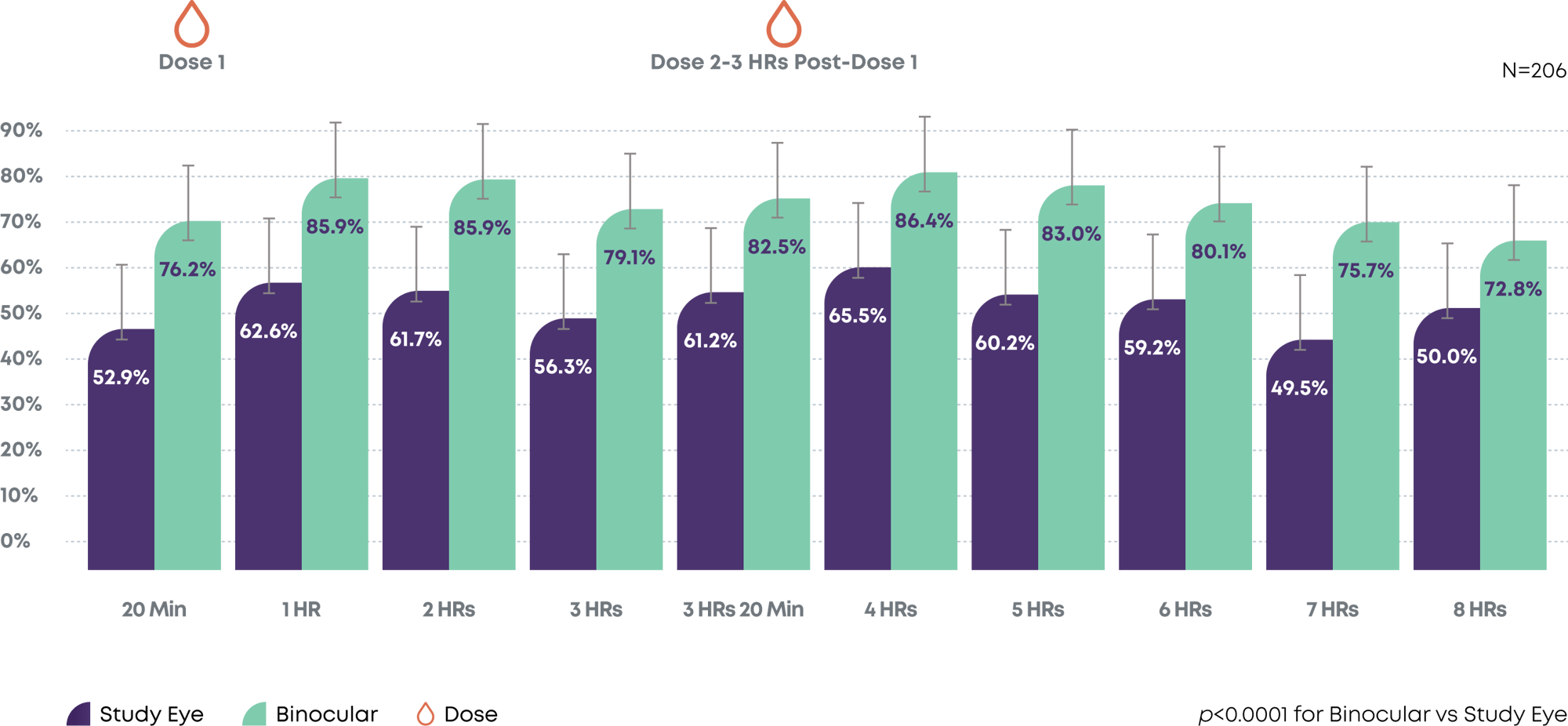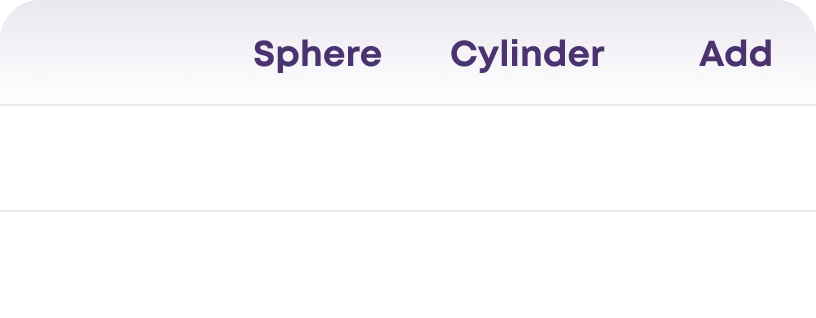Efficacy
Choose Qlosi for your patients that demand clear near vision, day or night.*
Provide your presbyopia patients more clear near moments without compromising distance vision1,2
Nearly all patients experienced enhanced functional near vision (20/40 or better) on Day 153

Clear near vision—without compromising distance vision2
Clinical data from Day 8 and Day 15 demonstrate a consistent combination of efficacy, safety, and comfort, resulting in meaningful improvements in near vision1,2
40% of presbyopia patients on Qlosi achieved a ≥3-line improvement in DCNVA, and no loss of 1-line or more in distance visual acuity on Day 8 at 1 hour post-dose 1 vs those taking Vehicle (19%) (P<0.0001)2
DCNVA=distance-corrected near visual acuity
Day or night.*
8 out of 10
patients taking Qlosi experienced enhanced functional near vision (20/40 or better) on Day 15 with binocular vision3
After 2 doses of Qlosi™, functional near vision was extended for up to 8 hours3
Day 15—Subjects with DCNVA 20/40 or better in Study Eye (Monocular) vs. Binocular Vision with all baseline subjects with 20/40 or better OU removed


*Advise patients to exercise caution in night driving and other hazardous activities in poor illumination.
DCNVA=distance-corrected near vision; OU=oculus uterque
See the Study Design below.



Female, 54
Mild myope

Meet Quinn: She has an active lifestyle that includes hikes and long runs.

Male, 50
Emmetrope

Not actual patients.
Designed to meet the diverse needs
of your presbyopia patients2
The NEAR-1 and NEAR-2 Qlosi clinical trials2

.png?width=670&height=1979&name=Study%20Design_Mobile%20(1).png)
Examination of the retina is advised in all patients prior to the initiation of therapy
aFor the first week, the second dose was administered 2 hours post dose 1. For the second week, the second dose was administered 3 hours post dose 1.
Primary endpoint:2
- The primary endpoint was the achievement of a ≥3-line improvement (or 15 letter gain) from baseline in DCNVA at 40cm with no loss in CDVA ≥1-line (or > 5 letter gain) at 4 m on Day 8 at 1 hour post-dose 1
Key secondary endpoints:2
- Key secondary endpoints were the same criteria on day 8 at 2 hours post-dose 1 and 1 & 2 hours post-dose 2
Key Inclusion Criteria:1
- Age 45-64 years
- Approximately between 20/50 and 20/160 Snellen in at least 1 eye*
- MR between -4.50 and +2.00 D sphere in each eye with <2.00 D difference between eyes
- <2.00 D of cylinder in each eye
- ~20/20-2 Snellen or better CDVA in each eye†
Key Exclusion Criteria:1
- Prior refractive surgery or IOL implantation
- Average dark-adapted pupillometry <3.5 mm in either eye
- >7 letters improvement in post-vehicle treatment in monocular DCNVA in either eye at visit 1 (pretreatment) and visit 2 (pretreatment baseline)
†≤0.04 logMAR CDVA in each eye.
CDVA=corrected distance visual acuity; DCNVA=distance-corrected near visual acuity; IOL=intraocular lens; MR=manifest refraction; NEAR=Near Eye-vision Acuity Restoration